milky way galaxy

The Milky Way Galaxy Resides in the Biggest Void in the Universe
| Arthur Dominic Villasanta | | Jun 07, 2017 07:20 PM EDT |
This void is estimated to have a diameter of 1 billion light years.
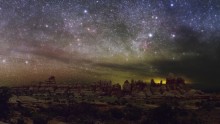
One Third of the World Can No Longer See the Milky Way Due to Light Pollution
| Ana Verayo | | Jun 11, 2016 03:01 AM EDT |
A new study and global atlas reveals how light pollution is preventing us to see the Milky Way across the night skies.
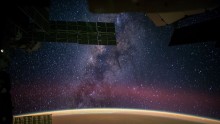
How Much Does the Entire Milky Way Weigh? 700 Billion Suns
| Ana Verayo | | Jun 01, 2016 06:42 AM EDT |
Astronomers reveal this brand new estimate of the mass of the entire Milky Way galaxy, reaching about 700 billion solar masses.
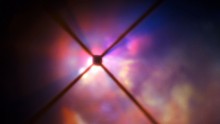
Dying Hypergiant Star is Shedding 30 Earths Every Year
| Ana Verayo | | Nov 26, 2015 06:50 AM EST |
Scientists have directly observed how the VY Canis Majoris is now shedding stellar mass equivalent to 30 Earths a year.
NASA’s Hubble Finds Massive Halo Around Andromeda, Reveals How Galaxies Are Born
| L. P. Cabasag | | May 11, 2015 06:31 PM EDT |
A massive gaseous halo around the Andromeda Galaxy has been discovered by a group of scientists using NASA's Hubble Space Telescope, a discovery that will answer scientists about the giant spiral galaxies and its evolution and structure such as the Milky Way Galaxy and the Andromeda Galaxy.

Andromeda Galaxy's Ghostly Halo is 1000 Times Bigger Invading Milky Way Galaxy
| Ana Verayo | | May 08, 2015 11:00 AM EDT |
Using the Hubble Space Telescope's observations, scientists revealed that Andromeda's mysterious halo is apparently much larger than first thought.
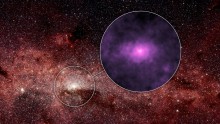
What are Howling 'Zombie Stars'? NASA's NuSTAR Finds Out
| Ana Verayo | | May 02, 2015 07:02 AM EDT |
NASA's NuSTAR space telescope detected some mysterious X-ray signals from the center of the Milky Way where they could orginate from pulsars or dying stars.
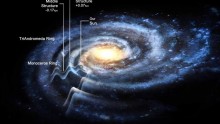
The Milky Way is 50% Larger than First Thought
| Ana Verayo | | Mar 12, 2015 07:17 AM EDT |
This data obtained from 2002 revealed the presence of a bulging ring of stars beyond the plane of the Milky Way.
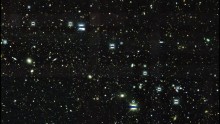
Dwarf Galaxies Orbiting the Milky Way Could Contain Dark Matter
| Ana Verayo | | Mar 11, 2015 06:38 AM EDT |
These small galaxies are also rare due to their size and low content of stars.

Evidence of Dark Matter Found in 'Galaxy X'
| Ana Verayo | | Feb 09, 2015 09:31 AM EST |
A new study reveals that the source of dark matter in the Milky Way.

Orderly Milky Way is Bizarre; Violent Andromeda is Normal
| Ana Verayo | | Jan 10, 2015 03:02 AM EST |
The Milky Way and Andromeda are separated by 2.5 million light years.
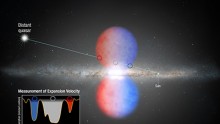
Massive Quasar Storm in Milky Way Explodes at 2 Million Miles an Hour
| Ana Verayo | | Jan 09, 2015 05:33 PM EST |
Astronomers have discovered a massive storm in the form of bubbles in the central Milky Way that possess gas clouds that travel at 2 million miles per hour.
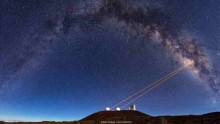
Scientists Identify Mysterious Object at the Milky Way's Center
| Ana Verayo | | Nov 04, 2014 09:16 AM EST |
This object known as G2 was long believed to be a hydrogen gas cloud.
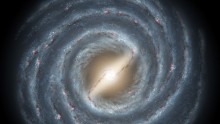
Milky Way Sucks Out all Star Forming Hydrogen from Nearby Dwarf Galaxies
| Ana Verayo | | Oct 19, 2014 08:28 AM EDT |
Specific boundary galaxies near the Milky Way classified as dwarf spheroidal galaxies don't have hydrogen.
Subscribe to CHINATOPIX !
Sign up for our free weekly newsletter for the latest in-depth coverage!
EDITOR'S PICKS
-

Did the Trump administration just announce plans for a trade war with ‘hostile’ China and Russia?
-

US Senate passes Taiwan travel bill slammed by China
-

As Yan Sihong’s family grieves, here are other Chinese students who went missing abroad. Some have never been found
-

Beijing blasts Western critics who ‘smear China’ with the term sharp power
-

China Envoy Seeks to Defuse Tensions With U.S. as a Trade War Brews
-

Singapore's Deputy PM Provides Bitcoin Vote of Confidence Amid China's Blanket Bans
-

China warns investors over risks in overseas virtual currency trading
-

Chinese government most trustworthy: survey
-

Kashima Antlers On Course For Back-To-Back Titles
MOST POPULAR
LATEST NEWS
Zhou Yongkang: China's Former Security Chief Sentenced to Life in Prison

China's former Chief of the Ministry of Public Security, Zhou Yongkang, has been given a life sentence after he was found guilty of abusing his office, bribery and deliberately ... Full Article
TRENDING STORY

China Pork Prices Expected to Stabilize As The Supplies Recover

Elephone P9000 Smartphone is now on Sale on Amazon India

There's a Big Chance Cliffhangers Won't Still Be Resolved When Grey's Anatomy Season 13 Returns

Supreme Court Ruled on Samsung vs Apple Dispute for Patent Infringement

Microsoft Surface Pro 5 Rumors and Release Date: What is the Latest?



